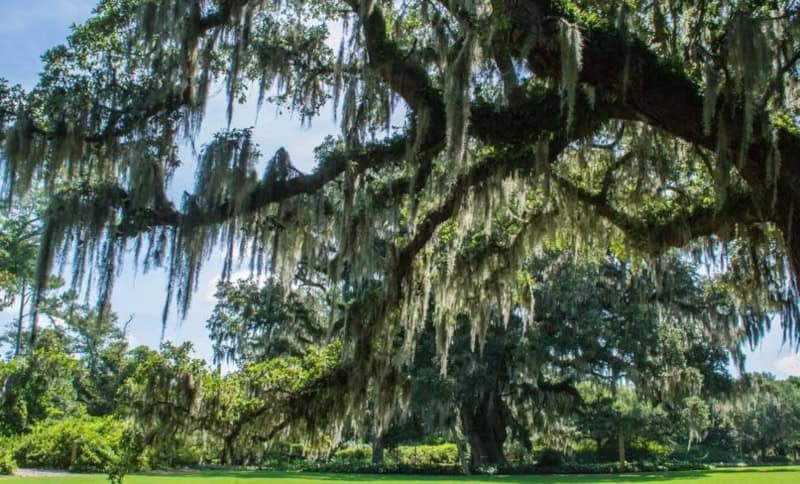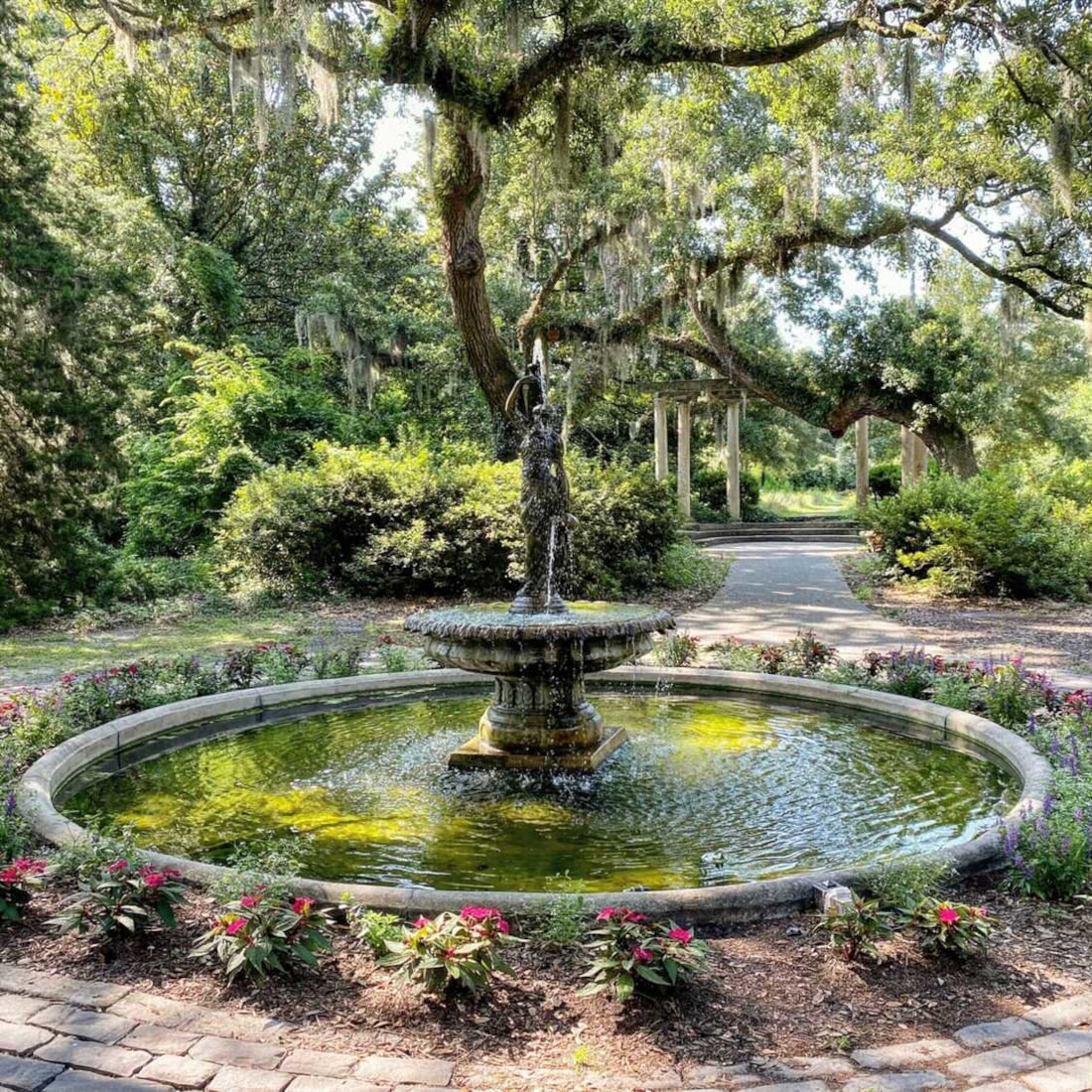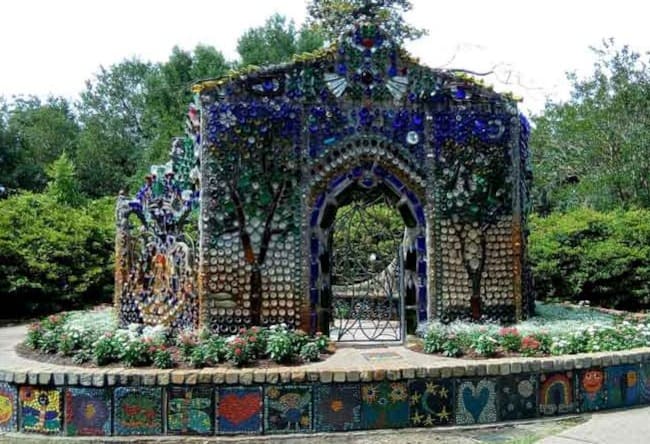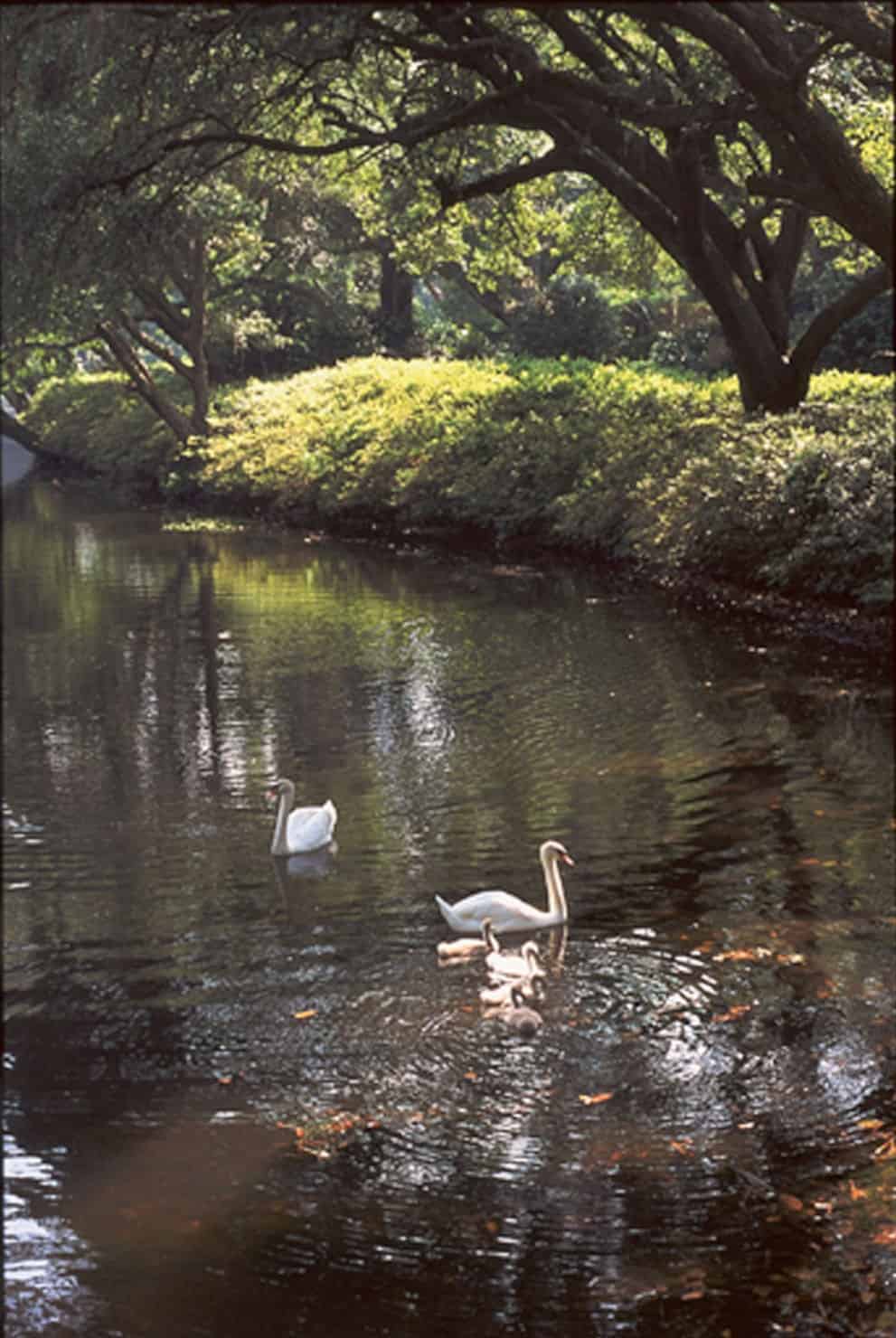
Airlie Gardens
Airlie Gardens
Botanical Garden
Street Address:
300 Airlie Road
Wilmington, NC 28403
Telephone: 910.798.7700
Hours:
Open Daily 9 AM – 5 PM
Last admittance at 4:30 PM
Guests must exit the grounds by 5:00 PM.
Closed on Mondays in January & February.
Admission:
General Admission | $10
New Hanover Resident (ID Required) | $5
Military (ID Required) | $5
Children (4-12) | $3
General Admission Tickets may be purchased online or onsite.
Tours:
Guided Tours: $10/person
Reservations recommended at least two weeks in advance
Special Hours & Closures:
Closed to Public | Thanksgiving Day, December 23-26th, New Year’s Day, Jan. & Feb. Mondays (winter hours)
Airlie Gardens began as a private garden in Wilmington, North Carolina in 1886 during the “Gilded Age.” New Hanover County purchased it in 1999. It is close to Wrightsville Beach and less than a mile from the Atlantic Ocean. Airlie Gardens has been a top garden in the South visited by millions of nature lovers.
This 67-acre lush oasis is well maintained by dedicated staff. It has collections of beautiful flowers, plants, bushes, and trees including azaleas, tulips, wisteria, camellias, palms, ancient oaks, and southern magnolia trees. You will enjoy the wildlife, walking trails, freshwater lakes, sculptures, and historic buildings. A memorable must-see is the 500-year-old southern live oak tree named, Airlie Oak, registered as member number 238 in the Live Oak Society.
Airlie Oak was last measured in 2007 by the North Carolina Forest Service. The official measurements were as follows:
· Height: 128 feet (39 meters)
· Trunk circumference: 21 feet (6.4 meters)
· Crown: 104 feet (32 meters)
Airlie Oak was the largest North Carolinian live oak at the time.
Exhibits include the Butterfly House and Native Wildlife Exhibit. Check for the latest captivating seasonal displays.
Educational opportunities are available for all ages. Learn about the environment and conservation.
The gardens are part of the American Horticultural Society and a member of the North Carolina Birding Trail.
Airlie Gardens can be seen in feature films including “28 Days” and “Black Knight” and in television series “Dawson’s Creek” and “One Tree Hill.”
Make reservations for Guided Walking Tours and Narrated Tram Tours.
Plan for almost a full day to absorb it all. Sunscreen, hat, sunglasses, refillable water bottle, and comfortable shoes are recommended.

© Ann Anderson
Airlie Gardens Fountain

Airlie Gardens Botttle Chapel
The Minnie Evans Bottle Chapel honors artist Minnie Evans, a longtime Airlie Gardens employee. It sits within the Minnie Evans Sculpture Garden.

© Brownie Harris
Swans and Marine Life
– Deep Dive –
The Airlie Oak
In the heart of Airlie Gardens stands a silent sentinel, a living monument to the passage of time – the Airlie Oak. This majestic Southern Live Oak, estimated to be around 500 years old, has witnessed centuries of change, its weathered bark whispering tales of bygone eras.
Towering at a staggering 128 feet, with a trunk exceeding 21 feet in circumference and a crown stretching 104 feet wide, the Airlie Oak is not just a tree; it’s a living legend, captivating the hearts of tourists and locals alike.
A Legacy Etched in Bark
While standing beneath this ancient giant, sunlight filters through its emerald canopy, dappling the lush carpet below. The air hums with the whispers of the wind rustling through its moss-draped branches.
Its leaves, a deep, glossy green, dance in the breeze, each one carrying the weight of countless seasons. The Airlie Oak’s roots are entwined with the very fabric of the region’s history. For 500 years, it has silently witnessed the ever-changing landscape of coastal Southeastern North Carolina.
A Vital Ecosystem
But the Airlie Oak’s significance extends far beyond its impressive size and age. Its complex root system, an intricate network spanning outwards, acts as a natural anchor, preventing soil erosion and filtering rainwater. It contributes significantly to the health and stability of the surrounding ecosystem.
The tree branches provide shelter and nesting sites for countless birds, from the nimble Carolina Chickadee to the majestic Bald Eagle to the aquatic-loving Black-crowned Night Heron. The Spanish moss adorning its limbs creates a unique microhabitat for various insects and invertebrates, adding to the biodiversity of the gardens.
Challenges Faced by the Airlie Oak
However, even giants face their battles. In recent years, the Airlie Oak has encountered challenges that threatened its health and longevity. Hurricanes have caused damage, snapping several branches.
Additionally, the ever-increasing urbanization and development in the surrounding area pose potential threats to its delicate ecosystem. Recognizing these challenges, the New Hanover County Airlie Gardens team has implemented comprehensive measures to protect the Oak, including regular pruning, lightning protection, and soil aeration.
A Beacon for Tourists
So, why is the Airlie Oak such a big tourist attraction? It’s a combination of factors: its awe-inspiring size and age, its undeniable beauty, and the rich history it embodies.
The Airlie Oak serves as a reminder of the power and resilience of nature, offering a glimpse into a world untouched by time. Visitors find themselves drawn to its quiet majesty, seeking respite from the hustle and bustle of daily life.
Families gather beneath its canopy, creating memories that will last a lifetime. Photographers capture its grandeur in stunning images, while artists find inspiration in its intricate details.
A Legacy to Preserve
The Airlie Oak is more than just a tourist attraction. It is a symbol of hope and perseverance. The Oak illustrates the importance of protecting our natural heritage and the interconnectedness of all living things.
As we stand beneath its branches, we are reminded of the responsibility we have to future generations to preserve this living legend and ensure its whispers continue to be heard for centuries to come.
Tourist Information
VisitWilmingtonNC.com™
